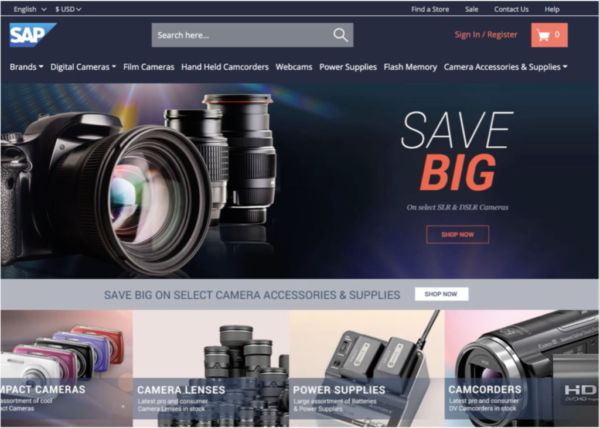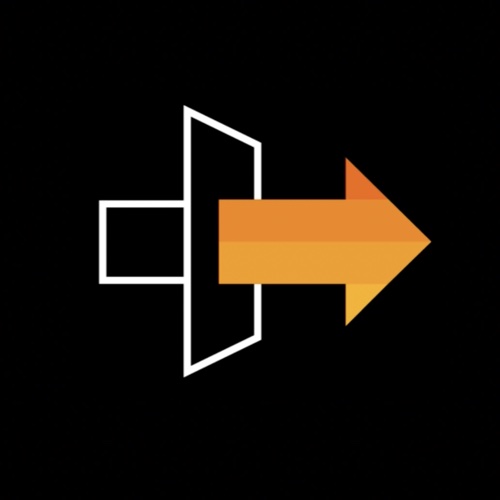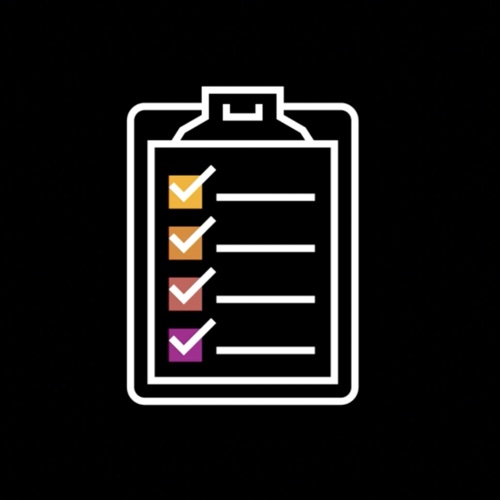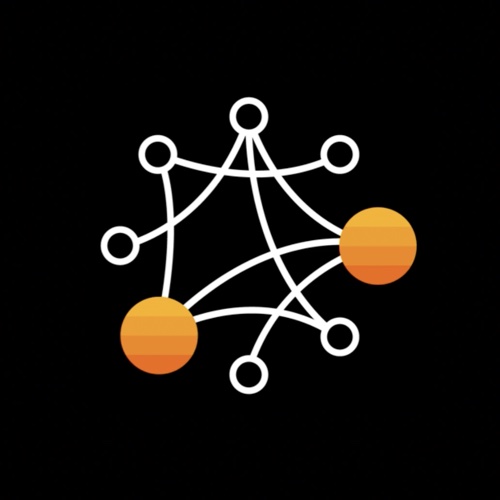
SAP Spartacus (now SAP Composable Storefront) is a cutting-edge storefront platform that offers businesses a wide range of functional capabilities for delivering exceptional online shopping experiences. It is the frontend technology for the SAP Commerce Cloud default stores.
From customizable product catalogs to real-time order tracking, this angular-based platform has everything you need to create an intuitive and engaging shopping environment.
Whether you are already using SAP Commerce or planning to do so, this guide will explore the various features and functionalities of SAP Spartacus, so you can make the most of this powerful platform and drive sales and growth for your business.
What is SAP Spartacus?

SAP Spartacus, also referred to as hybris’ Spartacus or Spartacus Storefront, is a free Javascript storefront for SAP Commerce Cloud. It can be considered a replacement for the old frontend accelerator templates included with Commerce Cloud releases, but it uses modern web technologies and frameworks.
Spartacus is an open-source Angular-based project available from Github, where the source code can be downloaded freely. It is published as a set of libraries that you can use to create your own storefront app.
You can change the styling, add features, and publish your own branded storefront as a PWA (Progressive Web Application) by importing these libraries into your custom app.
Spartacus is decoupled from the backend platform, meaning it runs on its own separate server node and communicates with the platform (Typically SAP Commerce Cloud) only through REST APIs. It’s a single-page application, meaning that only a single HTML page gets loaded, then the rest is driven by code. This strategy translates into good performance because Spartacus is a PWA that only loads the parts of the page that require updating.
Despite being a single-page application, SAP Spartacus supports search indexing and SEO as if each page view was independent. At its core, Spartacus will allow search indexing from web crawlers since Spartacus supports server-side rendering. The apps also control the URLs, so when users browse, they see proper URLs such as products/category/shoes.
The new version: SAP Composable Storefront
Since version 5.0, SAP officially renamed Spartacus to SAP Composable Storefront.
Although “SAP Spartacus” is its most common name, its official name is now “SAP Composable Storefront.” SAP officially supports all Commerce Cloud Customers with the Composable Storefront angular-based libraries.
Spartacus was an open-source project which served as a base for the new hybris storefront: the SAP Composable Storefront. However, versions 4.x and older are not officially maintained, meaning all projects are transitioning from Spartacus to SAP Composable Storefront.
It is important to note that on-premise customers can still use Spartacus libraries and edit them as they want. Let’s remember that they are open-source. Nevertheless, SAP Composable Storefront should be the go-to option for anyone starting an SAP Commerce implementation project, as it’s the hybris PWA successor.

How to Migrate to Spartacus from the Old Storefront
To keep getting SAP Commerce updates, it will be essential to migrate from the old Accelerator Storefront to Spartacus before the 2028 deadline.
The migration process involves analyzing your storefront, setting up the new Spartacus site, and transitioning CMS components and APIs. Testing ensures a smooth transition and minimizes risks and disruptions.
Once migration is complete, your Spartacus storefront goes live, replacing the old UI without downtime. Ongoing support and optimizations help maximize performance and user experience.
Our Spartacus Migration Guide for your e-commerce store explains this SAP Commerce storefront upgrade process in more detail.
Why Spartacus Angular?

Upgradable

Configurable

Extendable

Decoupled
- It allows you to create a fast and engaging PWA storefront for use with SAP hybris, resulting in a delightful customer experience and increasing conversion and revenue.
- SAP Spartacus-based storefronts are inherently fast to develop, which means a shorter time to market. The Spartacus framework comes with built-in features, it’s a great kickstart for your storefront, and you’re not building something from scratch.
- Libraries are upgradable, so every time a fix is released or a new feature is introduced, this can be taken advantage of immediately. When you leverage the code, you have complete control over the upgrades.
- It provides a great user experience as it’s fast, and you have control over everything in the UI and styling as well as feature extensions, whether you’re building a B2C, a B2B, or a B2B2C store.
- You can configurable add or hide features as needed and customize components. You can configure the routing, which is how the URL shows up, and the site context and localization. It has an out-of-the-box look and feel, but you can configure and extend it as little or as much as you wish.
- Spartacus-based storefronts use REST APIs that don’t limit the platform to features you can add to SAP Commerce Cloud. You can also point to microservices such as what’s offered with SAP Cloud Platform Extension Factory or any other microservice. For example, suppose you wanted to replace the review system in a Spartacus-based angular storefront with a review system offered by a 3rd party vendor. In that case, you could do so, and then any updates to the review system happen at the microservice and not in Spartacus.
- Spartacus comes with many out-of-the-box features, such as a home page and the ability to search, filter, and see product details, register, check out, see your orders, edit account preferences, and more. It also contains many outstanding architectural features like responsive design, which is the ability for the storefront to change its layout depending on the size of the device that’s viewing the content.
Spartacus’ Catalog and CMS Integration
Spartacus is decoupled from the backed platform, runs on its server node, and communicates with SAP Commerce Cloud through API rest calls, named Omni Channel Connect (OCC) within the SAP Commerce Cloud landscape.

It’s designed to integrate smoothly with SAP Commerce Cloud for all the product and content data. Hybris Spartacus takes that data and controls how it is displayed and styled.
Some of the examples of data that comes from SAP Commerce Cloud / hybris are:
- Catalog information (Product data, Images, Categories, Classification attributes, Prices, Stocks, etc.)
- Search and category results, navigation, and facets.
- Cart calculations, Minicart, Checkout, Payment system integration & Order Confirmation.
- CMS Content – Page layouts, templates, logos, banners, carousels, links, header, etc.
- Authentication systems, whether they are locally managed in Commerce or externally like CIAM.
- Customer account management and settings.
SAP Commerce’s Spartacus FAQs
 What is a Spartacus Developer?
What is a Spartacus Developer?
Spartacus / SAP Composable storefront, an Angular, lean application firmly tightened to SAP Commerce. To become a successful Spartacus developer, you should possess an Angular solid background and good knowledge about all the ins and outs of SAP Commerce Cloud. If you want to become a successful Spartacus storefront developer with a solid angular understanding, we encourage you to apply for an e-commerce developer position at E-Turia in the Careers area of our website.
 What is a Spartacus Storefront in hybris?
What is a Spartacus Storefront in hybris?
An SAP Composable, or Spartacus Storefront, is part of the e-commerce solution which enables a frontend that allows customers to interact with the platform. SAP Commerce / hybris Storefronts used to be embedded in the platform using technology based on Spring’s MVC (Model View Controller), JSP (JavaServer Pages) to render, and Bootstrap Javascript. Spartacus’s based SAP Composable Storefront replaced this embedded storefront.
 What’s Spartacus’s latest version?
What’s Spartacus’s latest version?
The last version of Spartacus, 4.3, was released in early 2022. As mentioned, this release can still be used but has been deprecated; the SAP Composable Storefront replaced it. Since version 2211.19, the Composable Storefront has aligned its versioning with SAP Commerce Cloud. The latest version can be found on the official SAP Composable Storefront page.
 How to Customize SAP Spartacus?
How to Customize SAP Spartacus?
You need a team of SAP Commerce developers with extensive experience in TypeScript, Angular, and SAP Commerce project development to customize, leverage, modify, and create new components on SAP Spartacus. If you need help with an SAP Composable Storefront project, please don’t hesitate to contact us through our Spartacus Implementation Services page. We will happily assess your project, including Spartacus and the backend.
